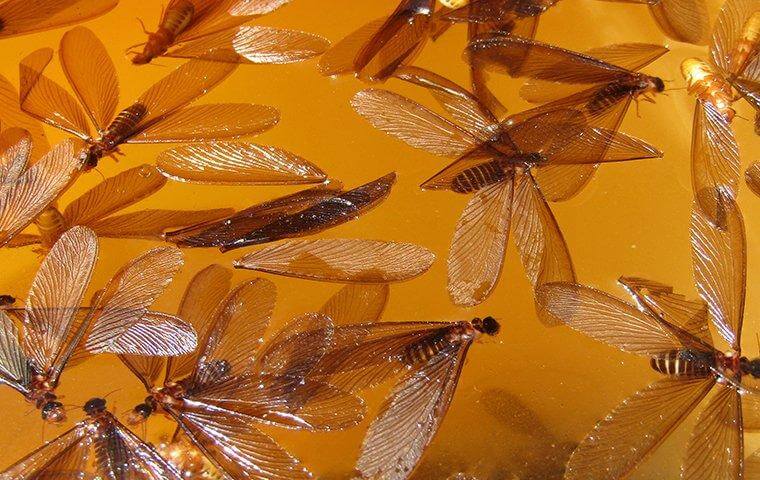 Everyone knows that termites can be a huge problem for homeowners, but a BILLION dollar problem is not something to take lightly. It’s definitely not something you want to put in the “Oh, it’ll never happen to me or my house” category, either. So, if you want to prevent termite activity before it’s too late, you have to understand the facts.
Everyone knows that termites can be a huge problem for homeowners, but a BILLION dollar problem is not something to take lightly. It’s definitely not something you want to put in the “Oh, it’ll never happen to me or my house” category, either. So, if you want to prevent termite activity before it’s too late, you have to understand the facts.
Termites: A Year-Round Scourge
People refer to the summer months, particularly June and early July, as “termite season”. But in reality, any warm days that follow a lot of rainfall are prime conditions for a termite swarm. A termite swarm occurs when the winged males and females from each colony fly to a new place to mate and start a new colony. This is actually the most noticeable of all the signs of a termite problem near your home. While these termites swarm are noticeable, it doesn’t always indicate an infestation. Termites might begin the mating process near your house and build a colony elsewhere. However, once you begin to see termite wings around your property (dropped after the mating process), it is a very strong sign of an infestation.
Most people give termites a little bit of grief for not being good flyers. However, the joke might be on us. Since termites don’t fly very well, you also could end up with multiple termite colonies on the same property. If there isn’t a strong wind blowing them as they swarm to colonize another property, then they’ll end up very close to where they started.
Avoiding Catastrophic Damage
Since termites target any wood source they can find for feeding purposes, they are well-known for the damage they can do to the structure of a home. Homeowners in the United States lose billions of dollars each year due to termite damage, most of which could have been avoided with proper infestation identification.
While termite damage is often crippling to a home and costs tens of thousands of dollars to repair, people don’t understand how long it takes to notice the true damage termites are doing. You might not notice any damage to the wooden structures in your home when termites have already set up shop within your walls, so let’s shift our focus to some signs you might be able to notice before you see the wood rotting. For instance, termites will leave trails in the wood: small, unnatural lines in the wood where they are moving. If you see this, call the professionals immediately. You might also notice holes in the drywall where these pests burrow through. Remember, just because you see a swarm on your property doesn’t mean they are going to colonize near your home. However, any sort of wing-droppings near your house is a surefire sign of an infestation and requires immediate professional help.
Handling The Problem Yourself
Another costly hurdle for many people is what to do after they notice termite activity in their home. It’s not “costly” in terms of pest control services. Those are just going to be a necessary expenditure. It’s only “costly” when homeowners think they can prevent termite activity on their own and deny the seriousness of the problem.
You see, the internet is a tricky thing. People want views on their page, so they will write long blogs about how you can prevent any further termite damage to your home with easy tricks. One technique calls for limiting the amount of wood that comes into contact with your home, so homeowners will create a small buffer between their mulch and their home’s foundation thinking that no termite would dare bridge that 3-inch gap to reach an unlimited food supply. Or maybe you could just try to wait until the winter when the Internet also claims the termites might stop eating or just…go away.
If you’re okay with leaving your home and your money to chance, then you can try and find some simple preventative measures on your own. But if you want a guaranteed way of keeping termites away from your home, the only technique you can trust is calling in the help of Pestmaster ® Services. Our trained professionals know exactly what to look for to find out if you have a serious termite problem, and we’ll know exactly what steps it will take to keep your investment safe.
.png)
